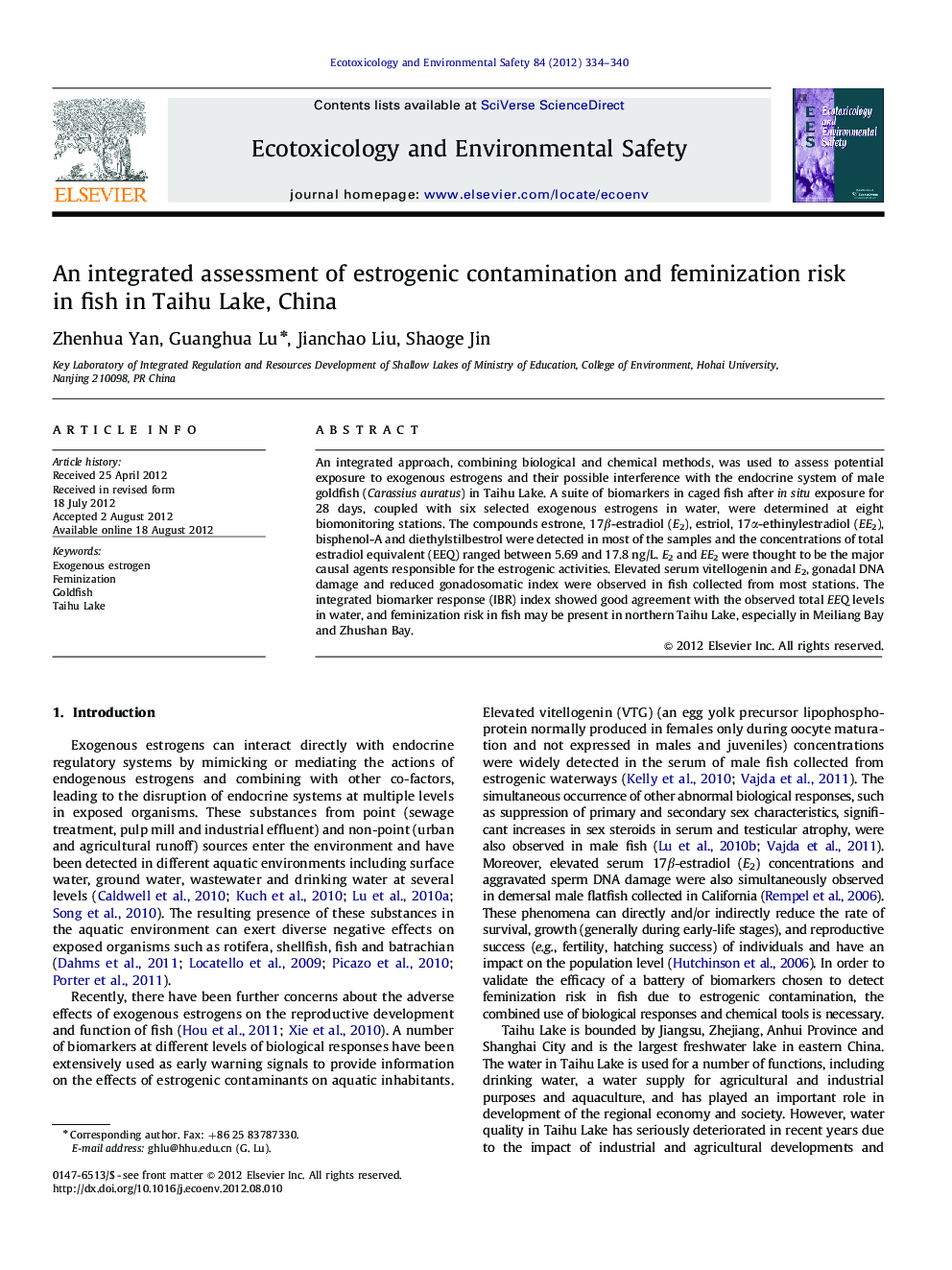| Article ID | Journal | Published Year | Pages | File Type |
|---|---|---|---|---|
| 4420763 | Ecotoxicology and Environmental Safety | 2012 | 7 Pages |
An integrated approach, combining biological and chemical methods, was used to assess potential exposure to exogenous estrogens and their possible interference with the endocrine system of male goldfish (Carassius auratus) in Taihu Lake. A suite of biomarkers in caged fish after in situ exposure for 28 days, coupled with six selected exogenous estrogens in water, were determined at eight biomonitoring stations. The compounds estrone, 17β-estradiol (E2), estriol, 17α-ethinylestradiol (EE2), bisphenol-A and diethylstilbestrol were detected in most of the samples and the concentrations of total estradiol equivalent (EEQ) ranged between 5.69 and 17.8 ng/L. E2 and EE2 were thought to be the major causal agents responsible for the estrogenic activities. Elevated serum vitellogenin and E2, gonadal DNA damage and reduced gonadosomatic index were observed in fish collected from most stations. The integrated biomarker response (IBR) index showed good agreement with the observed total EEQ levels in water, and feminization risk in fish may be present in northern Taihu Lake, especially in Meiliang Bay and Zhushan Bay.
► We investigated the spatio-temporal variation of estrogens in Taihu Lake. ► E2 and EE2 were regarded as the main estrogenic contaminations. ► Changes of serum VTG, E2, GSI and DNA damage in fish were observed. ► IBR index showed higher risk of feminization in Meiliang Bay and Zhushan Bay.
